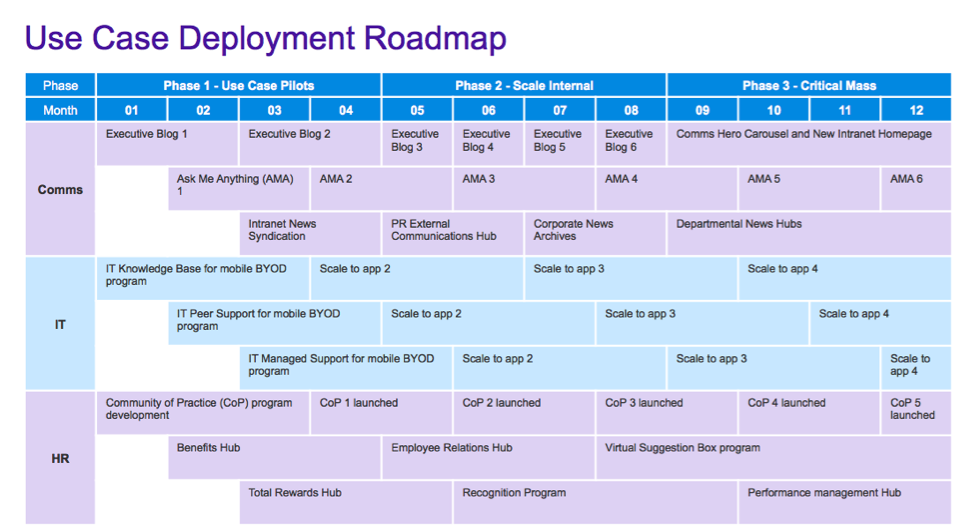At Jive, customers often ask us, “If we build it, they will come, right?” What they really want to know is whether or not they’ll be able to hit specific adoption goals on their platform in order to prove out ROI and general business value. While we certainly believe in the power of organic use cases such as affinity groups and general team collaboration, we also see tremendous value in treating the adoption of your platform much like you would any other program: by managing to specific goals.
Ideally, the result would be a complete re-imagination of the intranet itself, from just another business tool to a digital ecosystem where work gets done—in other words, an entirely new digital workplace.
But how do you do that? After all, social platforms are complex systems that rely on people and change, two notoriously difficult elements to predict (and control). At Jive, we lean heavily on different types of use cases that bring in people with different workstyles:
- Wide–or viral–use cases provide the foundation for collaboration across an organization and deliver measurable business benefit when all employees participate. Think of these as broad communication initiatives, communities of practice or departmental portals. These use cases focus on presenting usable information designed primarily for consumption. At the very least, they inform the way we work.
- Deep–or managed–use cases address specific processes and drive benefits for specific business areas. Think of these as process replacement or augmentation. These use cases are the way we work.
When creating an enterprise intranet deployment roadmap, we like to have a mix of the two to ensure broad participation, as well as a degree of stickiness with the platform. If I work in the platform every day, I will benefit from all the other good stuff that is surfaced precisely because I am there every day. I often use an “icing on the cake” analogy when describing managed and viral use cases in that, while the icing (viral use cases) may be delicious, it really doesn’t have a place without the cake (managed use cases).
When we start to layer in these use cases, the prioritization and phasing usually becomes very apparent based on the following factors:
- Barriers to entry: will people care and want to participate?
- Potential audience: how many people will this bring on? (critical mass is important)
- Sponsor: do we have a leader who will regularly ask how we are doing as well as what value this is bringing to the organization?
- Purpose: can we easily articulate what this is and why it matters?
- Politics: it’s true even if we do not like to discuss it! Do certain use cases matter more than others for non-value driven reasons? (hint: it’s ok if they do!)
- Community management: do we have an advocate who will spend significant time in the platform ensuring its success?
Then we can organize all of these use cases and respective departments into a plan. The example below gives you an idea of what a high-level 12-month plan might look like.

Most of these use cases will be part of any intranet replacement, but by phasing them in a programmatic way, we ensure we have continued, managed adoption of the platform. And the best part is that in addition to all of those wonderful organic use cases I mentioned above. A use case driven view also allows you to layer in both change management (communications, marketing, organizational readiness and training) and technical enhancement (integrations, feature enablement) needs in a sensible way in order to support specific use cases.
Suddenly, rather than a list of disparate ingredients that might result in something unexpected, you have a recipe for an entirely new way of working. And, after all, the most successful plans always make the best cake.
See how Jive works.
Request a personalized demo.
See for yourself how Jive can drive productivity and engagement across your organization. Get a free personalized demo.